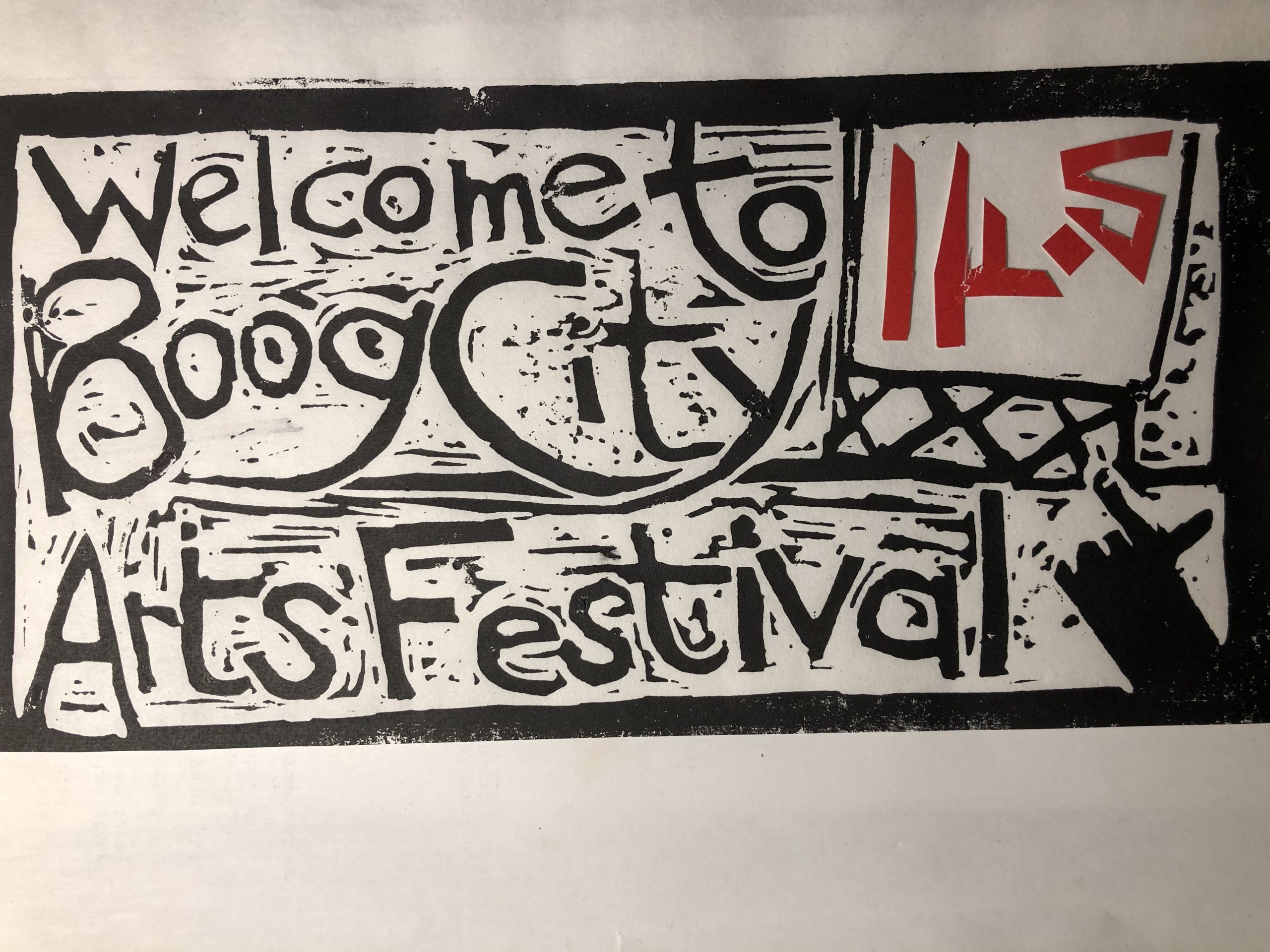Live at Bogie’s, Albany, N.Y., 30 Years Ago this St. Patrick’s Day
by David A. Kirschenbaum
All Blake Babies photos by Dan Wilcox, taken during their show at Bogie’s, 3/17/1991.
Sting was the one who first clued me into Blake Babies.
In 1982 I was a sophomore at The Brandeis School, a Jewish day school in Long Island Five Towns. This junior I didn’t really dig, Nancy, dug The Police, messrs. Sumner, Copeland, and Summer, so I decided I didn’t really dig The Police, even though I wasn’t quite sure what a Police song sounded like.
And then the album Synchronicity was released, and I did a deep dive backward into all that was The Police, a saturation job as Ed Sanders would call it. I got the neighborhood Record World to give me their wall display of the Synchronicity album cover, this massive cardboard that was like 3’ x 3’, since they didn’t really need anything to help Synchronicity sell more copies.
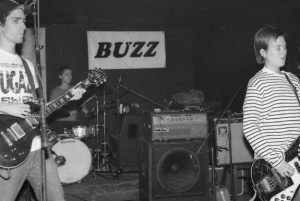 In the spring of 1983, my dad dropped 16-year-old me off at two in the morning at a Cedarhurst, Long Island music store that had a Ticketron outlet, next door to Mama Kelly’s, the Italian restaurant a 10-minute walk down Central Avenue from Brandeis that the non-scholarship kids would lunch at while I would go down the block with my friends to the kosher pizza place, order a diet coke with no ice, and eat whatever bagged lunch my folks or I had prepared for that day.
In the spring of 1983, my dad dropped 16-year-old me off at two in the morning at a Cedarhurst, Long Island music store that had a Ticketron outlet, next door to Mama Kelly’s, the Italian restaurant a 10-minute walk down Central Avenue from Brandeis that the non-scholarship kids would lunch at while I would go down the block with my friends to the kosher pizza place, order a diet coke with no ice, and eat whatever bagged lunch my folks or I had prepared for that day.
It was the same Ticketron outlet where five years earlier Dad and I were the next in line when they closed the door on the advanced sale of bleacher seats for the 1978 Dodgers at Yankees World Series. But this time, I was closer to the front, and not long after they started selling seats I was in possession of five tickets for The Police at Shea Stadium, Aug. 18, 1983. Joan Jett and the Blackhearts opened for The Police. An unknown band from Athens, Georgia, R.E.M., opened for them. It was raining a bit when R.E.M. came on, and back then Michael Stipe wouldn’t let you understand anything he was singing, so we all booed R.E.M., non-stop.
Any trip to a record shop from that first moment of falling in love with The Police, had me seeking out the band’s regular and adjacent rarities, bootleg albums, singles, you name it. My favorite still to this day? Stewart Copeland performing as Klark Kent, the album of which I’m pretty sure I had on Kryptonite green vinyl. Their big song, “Don’t Care,” still does it for me.
In 1985 Sting would go solo, playing a few shows at The Ritz on 11th Street in the East Village (now Webster Hall), and I got tickets for one of the shows, his first solo ones ever, where he performed the stuff that would end up later that year on his solo debut, The Dream of the Blue Turtles.
That spring I went to Macy’s and with a chunk of the insurance money received after I was hit by a car while crossing the street on the third anniversary of Yankees captain Thurman Munson’s death practicing takeoffs and landings at Ohio’s Akron-Canton Airport. I walked out with my first stereo ever, a Fischer rack floor model for like a grand, cash. I was now one of the first of my friends to own a CD player.
I went to the Record World in the same Roosevelt Field shopping center and bought my first four discs—The Police’s first two albums, Outlandos d’Amour and Regatta de Blanc; Madonna’s eponymous; and Springsteen’s Born to Run.
That summer, I went to an Astros at Mets game at Shea Stadium with my cousin Kenny, who was cool by baseball and me, but had only one request when I had asked him a little while back about going with me to a Mets game, it must be a day game, so he could get some sun, too.
After the afternoon game, I ended up that Saturday outside Radio City Music Hall by myself to sleep out until Sting’s Blue Turtle dates at Radio City Music Hall went on sale about 40 hours later on Monday morning.
A few months earlier, I had camped out for tickets for Springsteen’s Born in the U.S.A. tour with my friend Bruce Teichman. We bought our max allotment of eight tickets each, and then got folks on the line who were buying fewer than eight seats to buy additional ones for us, paying some of them an additional $10 per ticket, $30 each, until we left there with 32 seats behind the stage, in the upper tier of Giants Stadium. We held on to eight of them so I could see Springsteen and discover what the fuss was about, scalping the other 24 for $75 apiece. Barry Goldstein, one of my best friends since fifth grade, wanted to buy a pair, but didn’t want to pay the mark-up. “You mow lawns to make money,” I told him, “this is my summer job.” So Barry didn’t see Springsteen that August of 1985, but he wasn’t too upset with me either since Barry was always a hustler and could respect my game here.
So this summer of 1985 Sting’s Blue Turtles tour was going to be the next installment of my summer job. I was near the front of the line, and we all of us became fast friends. I was itching to buy seats for anything while we waited almost two days for the Sting tickets to go on sale, so I bought tickets for R.E.M.’s Fables of the Reconstruction store (spoiler alert: I wouldn’t appreciate this R.E.M. performance either. It took me until Risa got us tickets from work for the Green tour at Nassau Coliseum, for me and her and her cousin Sara, that I would finally appreciate them before doing a backwards calendar dive on them, too. And it was where they would turn me on to their opening act, Throwing Muses.)
I made friends with the other folks up front in the line, and after us getting our bracelets securing our spots in the line we rent a nearby hotel room for Sunday night, before returning Monday morning to buy our Sting seats.
People liked Sting in 1985, but I discovered they didn’t “Springsteen like” Sting in 1985. I took a bath on the extra Sting tickets I was hoping would be an extension of my summer job, even trading a pair to Debbie at Hair Machine, who’d been cutting my hair since my Bar Mitzvah almost six years earlier, for a pair of haircuts.
Skip to winter of 1991. I’d just trained the boss’ daughter at my electronics trade journalism job, before I was fired and she replaced me. I moved up to Albany, N.Y. to be in the same area code again as my college girlfriend of three-plus years Judy. I got a studio in the Knickerbocker Apartments, once an Amsdell Brewery, on Jay Street off of Albany’s 8th Street, Lark Street, where I paid $325 a month for a room with a bed that rolled out from beneath the two stairs up walk-in closet. I was with Judy and wrote poetry and went to readings all of the time.
Judy would clean this young couple’s home, and I would babysit their 1-year-old boy and 4-year-old girl, since I had experience from watching my first niece Amy, who would turn two that March. (It was a year before they would finally take me up on my offer to become their live-in nanny.) I was taking master’s classes as a non-matric in the American history program at SUNY, where I was the only grad student writing for the school paper, The Albany Student Press, music, film, and poetry pieces.
Sting was on the cover of Creem, this majestically oversized magazine that I’d never purchased before. I’m usually a cover-to-cover reader of magazines, and here on one of these oversized pages, was a black-and-white shot of a band I’d never heard of before. The article said they went to see Allen Ginsberg read poetry at Harvard University, and, during the Q&A, they asked him what they should name their nascent band. “Blake Babies,” Ginsberg replied.
•
A few days later I was reading Albany’s alternative newsweekly Metroland when I saw in the concerts ads that on St. Patrick’s Day Sunday of its reopening weekend, Blake Babies was going to be playing Bogies. I pitched Sue Friedman, the paper’s wonderfully kind and skilled arts editor, a month before meningitis would kill her, and she gave me the ok.
There wasn’t going to be enough time to get their two studio releases on what would soon become my favorite indy label, Carrboro, N.C.’s Mammoth Records, so I went to the offices of the school’s radio station, WCDB. They had Earwig and Sunburn on vinyl, and I used a stereo in their offices to copy them onto a TDK SA-90, which I proceeded to listen to on permanent repeat, permanently. I called Mammoth and arranged to meet the band before the show.
So that March 17, early in the evening, I was inside by the door at Bogie’s, and in comes guitarist John Strohm, long and lean, donning a black Chicago White Sox cap, the kind with just the word Sox in a script that if you look at it just right looks like it says sex. The band was hoping for some vegetarian fare, so they follow my girlfriend Judy and me to the local, hippy-ish spot, Mother Earth’s Cafe.
They wanted to just eat and relax, so they asked if we could do the interview after the show. And we six, Judy and me, Strohm, singer/bassist Juliana Hatfield, drummer Freda Love (né Boner), along with the tour added fourth Blake Baby, guitarist Mike Leahy, just gabbed over our pre-show meal. All the while a solo musician at the cafe played what for even me may have been too many John Denver covers, while Freda informed me of the best way to brew a pot of coffee. “You need the coldest possible beans,” she declared, “and the coldest possible water.”
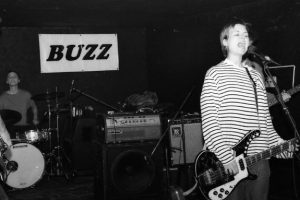 We led them back to Bogie’s, where I was about to see them play live for the first time, recording the show with the built-in mic on my Radio Shack Realistic cassette recorder. They were sweet and powerful, and all sorts of jingle-jangle guitar. They were all of 22—“Everyone cool is 22,” Juliana told me before the show—at the top of their game and about to break up. (My two favorite bands broke up in back-to-back years, first Blake Babies and then 10,000 Maniacs. For a while I was afraid to declare any band my favorite band again for fear that I was some sort of curse.)
We led them back to Bogie’s, where I was about to see them play live for the first time, recording the show with the built-in mic on my Radio Shack Realistic cassette recorder. They were sweet and powerful, and all sorts of jingle-jangle guitar. They were all of 22—“Everyone cool is 22,” Juliana told me before the show—at the top of their game and about to break up. (My two favorite bands broke up in back-to-back years, first Blake Babies and then 10,000 Maniacs. For a while I was afraid to declare any band my favorite band again for fear that I was some sort of curse.)
Over the coming years I would acquire everything Blake Babies adjacent, interviewing Juliana when she came back to Bogie’s a year later in support of her first solo album, Hey Babe, a show where she delivered one of my favorite covers ever, her take of Lesley Gore’s anthemic “You Don’t Own Me.”
I’d see John Strohm in every musical incarnation, getting high with him backstage at Wetlands as Antenna opened for fireHOSE and Los Angeles was burning during the Rodney King riots; seeing him play at the much missed Brownie’s; hell, even going to see The Lemonheads when he was their guitarist for a short while.
I’d go to the Knitting Factory with Nan to see Juliana and Freda together again, this time with Heidi Gluck in their new band, Some Girls. Saw Juliana play at Bowery Ballroom, The Academy, Mercury Lounge, Acme Underground, and Fez under Time, and the venues long forgotten, only one of which exists anymore. I let out a huge smile when I spied a poster for Antenna’s Hideout album on the wall in Brenda Walsh’s Minnesota dorm room in 90210.
While I was bringing in the new millennium on Leonard Street at The Knitting Factory with Neal Climenhaga, us standing a few feet from Elliott Smith when he asked us all at three minutes to midnight, “I need a 2-minute song, what should I play,” me yelling out “Say Yes,” him going right into it before counting to the new year, kissing his lady, popping and taking a slug from a bottle of champagne, passing it to the crowd and I would drink from it a minute later. At that same moment, almost 900 miles away in Nashville, Tenn., Blake Babies were playing their first show in seven-plus years.
And then the Juliana Hatfield/Blake Babies This is the Sound Yahoo group announced that Blake Babies were playing a second reunion show, this one scheduled for Birmingham, Ala., during the same weekend Strohm was getting married there. I would have gone anywhere to see that show. It would be the first of only two times in now 54 years that I would fly to see a band (the other being the following summer to see Sleater-Kinney in Seattle on the water, opening for Patti Smith).
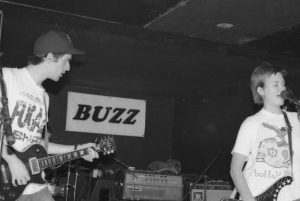 But, hell, this show was in a city central in the struggle for civil rights in the sixties, home to so many awful reminders of our past and to the Birmingham Civil Rights Institute. Plus there was a Matisse exhibit of work from the collection of Gertrude Stein and Alice B. Toklas’ friends the Cone sisters that would be in town around the time of the reunion concert. And then it was announced that some of Strohm’s friends in town for his wedding would be opening up for Blake Babies—Ben Lee, followed by The Lemonheads.
But, hell, this show was in a city central in the struggle for civil rights in the sixties, home to so many awful reminders of our past and to the Birmingham Civil Rights Institute. Plus there was a Matisse exhibit of work from the collection of Gertrude Stein and Alice B. Toklas’ friends the Cone sisters that would be in town around the time of the reunion concert. And then it was announced that some of Strohm’s friends in town for his wedding would be opening up for Blake Babies—Ben Lee, followed by The Lemonheads.
The following spring they played the Knit, their first time in New York City since Sunburn, and a fan from the email list hooked me up with my only Blake Babies t-shirt ever, which they had made for some of us list members especially for this mini-tour.
And then they were gone, with the occasional Boston reunion and Go Fund Me drive to release rarities. They opened once for Letters for Cleo, but I was broke at the time and couldn’t handle the ticket price and didn’t know which Boston poet friend might be cool about putting me up.
But I’ll always look at St. Patrick’s Day 1991 as one of the key moments in my musical education. It was a time that I was turned on to Blake Babies (and later to all their iterations), The Stooges, The Lemonheads, Bullet Lavolta, fIREHOSE, Mike Watt, and Buffalo Tom, among others.
If I didn’t buy that Creem and see that the band was named by Allen Ginsberg, would I have ever even heard of Blake Babies?
I probably would have heard of Juliana Hatfield from early MTV play, a spot on the Reality Bites soundtrack, and a guest spot on My So-Called Life and, who knows, may have even done a deep dive backward and discovered Blake Babies years after they’d broken up. It’s that sliding doors theory of life, how one action can so powerfully alter your path. To kinda quote Juliana, “I’ve got Blake Babies in my head, I’m so glad I’m not dead.”
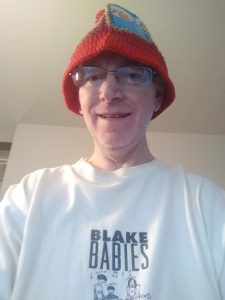 DAVID A. KIRSCHENBAUM (boogcity.com) is the author of The July Project 2007 (Open 24 Hours), a series of songs about Star Wars set to rock and pop classics. His work has appeared in Brooklyn Rail, the Brooklyn Review Online, CanWeHaveOurBallBack.com, Chain, and The Village Voice, among others. He is the editor and publisher of Boog City, a New York City-based small press and electronic newspaper now in its 30th year. He is the director of the Welcome to Boog City Arts Festivals, now in its 15th year. His Gilmore girls tinged poems form the lyrics of Preston Spurlock and Casey Holford’s band Gilmore boys (www.myspace.com/gilmoreboysmusic).
DAVID A. KIRSCHENBAUM (boogcity.com) is the author of The July Project 2007 (Open 24 Hours), a series of songs about Star Wars set to rock and pop classics. His work has appeared in Brooklyn Rail, the Brooklyn Review Online, CanWeHaveOurBallBack.com, Chain, and The Village Voice, among others. He is the editor and publisher of Boog City, a New York City-based small press and electronic newspaper now in its 30th year. He is the director of the Welcome to Boog City Arts Festivals, now in its 15th year. His Gilmore girls tinged poems form the lyrics of Preston Spurlock and Casey Holford’s band Gilmore boys (www.myspace.com/gilmoreboysmusic).
